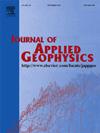Advanced predictive modelling of electrical resistivity for geotechnical and geo-environmental applications using machine learning techniques
IF 2.2
3区 地球科学
Q2 GEOSCIENCES, MULTIDISCIPLINARY
引用次数: 0
Abstract
Electrical Resistivity (ER) is one of the best geophysical methods for subsurface investigation, especially for geotechnical and geo-environmental studies. Being non-invasive, economical and rapid, this method is highly preferable to geotechnical engineers for continuous evaluation of soil properties along the resistivity profile. Numerous studies have been conducted to correlate the subsurface properties with the ER. However, most of the studies consider a single input variable, which is correlated with the resistivity values using some conventional regression analyses. Very few studies have been conducted to obtain the resistivity value with multiple input parameters, like unit weight, temperature, porosity, moisture content, etc. Since, the soil parameters have a combined effect on resistivity, hence, correlations between the resistivity and the multiple input parameters are urgently required for a better and more reliable result. Moreover, the non-linear properties of soil make the task more complicated. To fill up this research gap, in the present study, 2772 ER tests were conducted using seven different types of soil with different combinations of temperature, density, and water content. Using this database, a Support Vector Regression (SVR), Artificial Neural Network (ANN) model and Extreme Gradient Boosting (XGB) were developed for prediction of ER. It has been understood that all the models are acknowledged as trustworthy data modelling tools. However, the XGB model performs better with an R2 of 0.99 during the training and testing phase. Further, a parametric study was also done to determine, how each input parameter affects the ER. An error analysis was also performed to see the consistent discrepancy between the experimental and projected values of ER. The outcomes validate the robustness of the XGB model, indicating that it can serve as a substitute method for ER prediction.
利用机器学习技术为岩土工程和地质环境应用建立电阻率高级预测模型
电阻率(ER)是进行地下勘测,特别是岩土工程和地质环境研究的最佳地球物理方法之一。这种方法具有非侵入性、经济性和快速性等特点,非常适合岩土工程师沿电阻率剖面对土壤特性进行连续评估。为了将地下属性与电阻率相关联,已经进行了大量研究。然而,大多数研究考虑的是单一输入变量,并通过一些传统的回归分析将其与电阻率值相关联。很少有研究利用单位重量、温度、孔隙度、含水量等多个输入参数来获取电阻率值。由于土壤参数会对电阻率产生综合影响,因此迫切需要将电阻率与多个输入参数相关联,以获得更好、更可靠的结果。此外,土壤的非线性特性使这项工作变得更加复杂。为了填补这一研究空白,本研究使用七种不同类型的土壤,以不同的温度、密度和含水量组合进行了 2772 次 ER 试验。利用该数据库,开发了支持向量回归(SVR)、人工神经网络(ANN)模型和极梯度提升(XGB)模型,用于预测 ER。据了解,所有模型都被认为是值得信赖的数据建模工具。不过,在训练和测试阶段,XGB 模型的 R2 值为 0.99,表现更佳。此外,还进行了参数研究,以确定每个输入参数对 ER 的影响。还进行了误差分析,以了解 ER 的实验值和预测值之间的一致差异。结果验证了 XGB 模型的稳健性,表明它可以作为 ER 预测的替代方法。
本文章由计算机程序翻译,如有差异,请以英文原文为准。
求助全文
约1分钟内获得全文
求助全文
来源期刊

Journal of Applied Geophysics
地学-地球科学综合
CiteScore
3.60
自引率
10.00%
发文量
274
审稿时长
4 months
期刊介绍:
The Journal of Applied Geophysics with its key objective of responding to pertinent and timely needs, places particular emphasis on methodological developments and innovative applications of geophysical techniques for addressing environmental, engineering, and hydrological problems. Related topical research in exploration geophysics and in soil and rock physics is also covered by the Journal of Applied Geophysics.
 求助内容:
求助内容: 应助结果提醒方式:
应助结果提醒方式:


